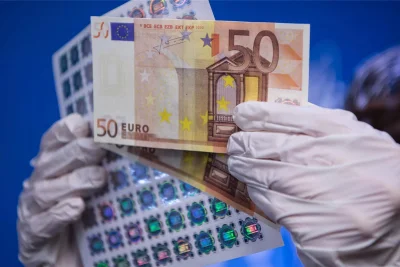Order Counterfeit Money Explained In Fewer Than 140 Characters

The Dangers of Counterfeit Money: Understanding the Risks and Consequences
In a progressively cashless society, the use of physical currency may seem outdated to some, yet counterfeit money stays a consistent issue that impacts people, businesses, and economies worldwide. The elegance of existing counterfeiting strategies has actually only grown, making it important for customers and organization owners to inform themselves about the threats, recognition techniques, and legal repercussions of counterfeit currency. This short article explores the intricacies of counterfeit money, outlines the actions one can take to secure against it, and responses often asked questions about this relevant topic.
Understanding Counterfeit Money
Counterfeit money refers to currency that has actually been produced illegally with the intent to deceive. Counterfeiters use various techniques to duplicate banknotes and coins, typically making use of high-quality printing technology and intricate styles that imitate real currency. While the main motive behind producing counterfeit currency is monetary gain, the ramifications extend beyond mere theft; they can destabilize economies, drawback honest organizations, and lead to severe legal effects for those involved.
The Impact of Counterfeit Money
Economic Consequences: When counterfeiting becomes widespread, it can lead to inflation, a reduction in currency value, and general mistrust in the nation's financial system. This mistrust can lead to consumers keeping their money or choosing for alternative kinds of transactions, which can further hurt the economy.
Effect on Businesses: Businesses, especially small ones, are often struck hardest by counterfeit currency. Accepting fake notes can cause substantial monetary losses and even personal bankruptcy. Additionally, counterfeiting can damage an organization's reputation; customers may be less ready to trust brands that succumb to counterfeiting plans.
Legal Repercussions: Unwittingly accepting counterfeit money does not eliminate liability from individuals or companies. The law usually needs that those who have counterfeit currency need to report it to authorities, as knowingly dealing in fake money can lead to criminal charges.
How to Recognize Counterfeit Money
Recognizing counterfeit money is vital for securing oneself from monetary loss. Here are some effective methods to recognize fake currency:
Check the Print Quality: Genuine currency has a particular texture, color, and print quality that can be difficult to replicate. Inspect banknotes for smearing or blurring, which might indicate counterfeiting.
Search for Watermarks: Most contemporary banknotes contain watermarks that are challenging to duplicate. Hold the bill approximately the light to see if the watermark exists and clear.
Check the Security Thread: Real banknotes have actually embedded security threads, usually noticeable when held up to the light. Counterfeit costs might lack these features, or they might be improperly reproduced.
Utilize a UV Light: Many currencies have aspects that fluoresce under ultraviolet light. Examining these functions can assist in determining the authenticity of a banknote.
Feel the Texture: Authentic currency is printed on a particular kind of paper that feels different from routine paper. Rubbing your fingers over the bill can assist you identify its authenticity.
Tips to Protect Against Counterfeit Currency
To minimize the risk of succumbing to counterfeit money, individuals and services can implement the following measures:
Educate Employees: Regular training sessions on how to spot counterfeit money can be advantageous for employees, especially those in retail settings.
Use Detection Tools: Invest in counterfeit detection gadgets such as UV lights, pen testers, or digital note validators that can properly inspect currency credibility.

Maintain professionelle fälschungen kaufen on Transactions: Encourage alert monitoring of cash deals and screens for possible counterfeit notes.
Legal Aspects of Counterfeit Money
Participating in the production, distribution, or usage of counterfeit currency is versus the law in practically every country. Legal repercussions can consist of hefty fines and imprisonment. Government firms, such as the U.S. Secret Service, actively examine counterfeit money operations, and people found guilty of participation in counterfeiting might deal with severe penalties.
Often Asked Questions (FAQs).
1. Is it illegal to unknowingly accept counterfeit money?
Yes, while it may not be a criminal charge to accept counterfeit currency unintentionally, there is a responsibility to report the counterfeit to authorities. Failure to do so can lead to civil liabilities.
2. What should I do if I receive counterfeit money?
If you think you have gotten counterfeit money, do not try to spend it. Instead, report the occurrence to local law enforcement or your country's monetary authority. Furthermore, record the details of the transaction and where you received the currency.
3. Exist specific currencies that are more commonly counterfeited?
Yes. The U.S. dollar is the most widely counterfeited currency worldwide, but other currencies like the euro, British pound, and Indian rupee have also been counterfeited thoroughly.
4. How can I guarantee my service isn't accepting counterfeit money?
Train your employees on recognizing counterfeit notes, invest in detection technology, and implement stringent cash-handling practices.
5. What can I do to spread awareness about counterfeiting?
Sharing details through workshops, community boards, or social networks platforms can inform others about the threats and avoidance approaches related to counterfeit currency.
Conclusion.
Counterfeit currency presents significant dangers not just to specific consumers however also to organizations and the economy as a whole. Understanding how to identify fake currency, recognizing the further implications of counterfeiting, and taking proactive actions can reduce risks. Awareness and vigilance can make a considerable difference as we continue to navigate a world where counterfeit money remains a danger to monetary integrity. By equipping themselves with knowledge and tools to fight counterfeiting, individuals and services can protect themselves and contribute to a more protected economic environment.
